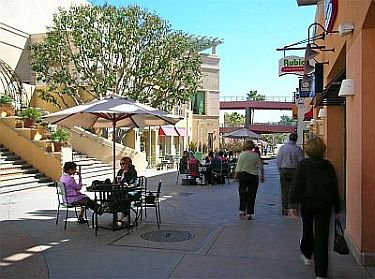A new California law will affect Palos Verdes home owners. Effective as of July 1, 2011, all single family dwellings in California (and that includes Palos Verdes homes) with “a fossil fuel burning heater or appliance, fireplace, or an attached garage” must have an approved carbon monoxide device installed in the dwelling. All other dwellings (apartments, hotels, dorms, etc.) will have to have the detector installed by January 1, 2013. Holly M. Thomas, General Counsel for Remax Palos Verdes & Execs Realty has written the following article which answered most of my questions:
“Reviewing the law carefully, there are several ways to fall into the July 2011 requirement: 1. Single-family dwelling; and 2. (a) Have a non-electric heater, appliance or fireplace, OR (b) Have an attached garage.
If your home is all electric AND the garage is unattached, there is no need for the detector as there is nothing emitting carbon monoxide into the home.
What kind of detector will meet the requirement? The carbon monoxide device has to be approved by the State Fire Marshall and must produce a “distinct, audible alarm.” It can be powered in any manner: battery, hard-wired (so long as it has a battery backup), or a plug in. There are combined carbon monoxide/smoke detectors that meet the requirements but only if they have an alarm or voice warning so that it is clear whether it is the carbon monoxide or smoke creating the warning — most say “smoke alert” or something to that effect so that you can easily distinguish which alarm is sounding. Regardless of what is installed, the key is that it has to be operable.
Where should the detectors be installed? The law is not specific about where the installation should occur; however, each package comes with the following language: “For minimum security, a Carbon Monoxide Alarm should be centrally located outside of each separate sleeping area in the immediate vicinity of the bedrooms. The Alarm should be located at least 6 inches (152mm) from all exterior walls and at least 3 feet (0.9 meters) from supply or return vents.” This follows California residential building codes for 2010, which also require that a detector be on each level of a dwelling where fossel-fuel appliances exist as well as in basements and garages.
What is the disclosure requirement? All sellers must give buyers a disclosure stating whether the property has a carbon monoxide detector. The TDS was revised in November 2010 to include questions regarding carbon monoxide installation. Saying “no” does not invalidate the sale and the transfer may still occur but that will probably prompt a Request for Repairs from the buyers. There is a potential $200 penalty for noncompliance if owner fails to install the detectors after being given a 30-day notice to correct the deficiency and up to $100 charge for selling or transferring a property without compliance.
For more information about carbon monoxide detectors, you can review Cal. Health & Safety Code § 17926 to 17926.2 – Regulation of Buildings Used for Human Habitation (http://www.leginfo.ca.gov/cgi-bin/displaycode?section=hsc&group=17001- 18000&file=17920-17928), which regulates the installation of the detectors, and Cal. Health & Safety Code § 13260 to 13263 – Carbon Monoxide Poisoning Prevention Act of 2010 (http://www.leginfo.ca.gov/cgi-bin/displaycode?section=hsc&group=13001- 14000&file=13260-13263), which defines some of the terms and discusses approved and unapproved devices.
The information in this article is believed accurate as of the date of publishing. This information is not intended to be legal advice for a specific situation but rather to provide answers to general questions. Advice in specific situations may differ depending upon a wide variety of factors; therefore, individuals with specific issues should seek the advice of an attorney, financial advisor or other professional.”





Join The Discussion